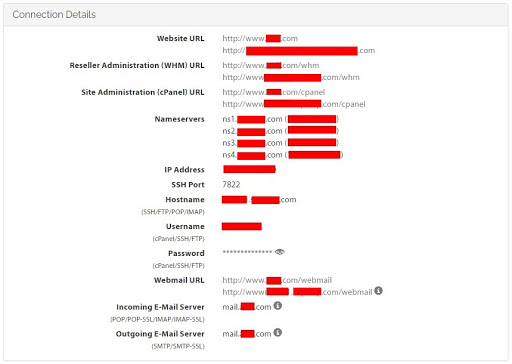How to use SSH (Secure Shell) on Windows and Mac to access your account
This article describes how to connect to your A2 Hosting account securely using SSH.
What is SSH access and why would you need to use SSH?
Secure Shell (SSH) is a protocol that provides secure command-line access to your A2 Hosting account. By using SSH, you can remotely log in to your A2 Hosting account and run commands as if you were sitting right at the server.
With its simplified interface, the command line allows you to perform tasks with text commands. You'll also find that SSH is a time-saving solution that can ultimately help speed up many tasks. For example, you can do tasks that you cannot do with your account's hosting control panel.
How SSH works
An SSH connection creates a secure connection between two computers. SSH is able to provide a safe, encrypted connection between the client and the server through this encrypted tunnel. From here, you can easily transfer files between the connected machines, or run programs and commands that would otherwise require more complicated screen-sharing solutions. It is as if you were right in front of your server, in the data center where it is located.
What you need to create an SSH connection
Just as you need an FTP client to manage files with FTP, you need an SSH client on your computer to make an SSH connection. PuTTY and WinSCP are two popular SSH solutions for Windows users. Both Linux and macOS have built-in terminals, so it is not necessary to download an SSH client. Our step-by-step SSH account access instructions, outlined below, will help you access your account remotely.
Where can you find SSH connection details?
To find the SSH connection details for your account, log in to the A2 Hosting Customer Portal at https://my.a2hosting.com.
Click on your plan, located in the Your Active Products/Services section:

Click anywhere on your package. This takes you to the Manage page. The Manage page contains all of the technical information you need for SSH, such as your IP Address, SSH Port, Username, and Password:

For more information about how to use the Customer Portal, please see these articles.
How to use an SSH client
Once you have the connection details for your account, you are ready to use an SSH client to connect to the server. Follow the appropriate procedure below for your computer's operating system.
Windows operating systems
You can use any SSH client, but we will show how to use PuTTY, which you can download here. To connect to your account using PuTTY, follow these steps:
- Start PuTTY.
- In the Host Name (or IP address) text box, type the hostname or IP address of the server where your account is located.
- In the Port text box, type 7822.
A2 does not use the default SSH port 22. Please SSH to port 7822.
- Confirm that the Connection type radio button is set to SSH.
- Click .
- A PuTTY security alert about the server's host key appears the first time you connect. Click .
- Enter your account username when prompted, and then press Enter.
- Type your account password when prompted, and then press Enter.
For security reasons, no characters appear in the terminal as you type the password.
- When the remote server's command line prompt appears, you are connected. The initial command line prompt is:
[email protected] [~]#
- You can now run commands. For example, to see a listing of the current directory, type ls, and then press Enter.
- To close the SSH connection when you are done, type exit and then press Enter.
macOS and Linux operating systems
Both macOS and Linux include SSH clients, so connecting to your A2 Hosting account on these operating systems is easy. You do not have to download a special client.
To connect to your account, follow these steps:
- Open a terminal window. The procedure to do this depends on the operating system and desktop environment.
- On macOS, click Applications, click Utilities and then click Terminal.
At the command prompt, type the following command. Replace username with your A2 Hosting username, and example.com with your site's domain name:
ssh -p 7822 username@example.com
A2 does not use the default SSH port 22. Please SSH to port 7822.Type your password when you are prompted to do so.
For security reasons, no characters appear in the terminal as you type the password.When the remote server's command line prompt appears, you are connected. The initial command line prompt is:
[email protected] [~]#
- You can now run commands. For example, to see a listing of the current directory, type ls, and then press Enter.
To close the SSH connection when you are done, type exit and then press Enter.
In the command in step 2, we explicitly specify the port number, the username, and the hostname. However, you can also define these settings for a remote host in your ~/.ssh/config file as follows:
Host example Hostname example.com Port 7822 User usernameThe Host value can be any name you want; it is simply a label for the other settings. The Hostname value is the remote host you want to access, the port number is 7822, and the User value specifies your A2 Hosting account username. With this configuration defined, you can connect to the account by simply using the Host value. You do not have to type the port number, username, and hostname each time. The following command demonstrates how to do this:
ssh example
Article Details
- Operating System: Linux Hosting
- Level: Beginner
Grow Your Web Business
Subscribe to receive weekly cutting edge tips, strategies, and news you need to grow your web business.
No charge. Unsubscribe anytime.
Did you find this article helpful? Then you'll love our support. Experience the A2 Hosting difference today and get a pre-secured, pre-optimized website. Check out our web hosting plans today.